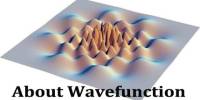Infrared (IR) glass may now be mixed with another glass and shaped into complicated tiny patterns, thanks to a novel production process created by researchers. The method can be used to produce complicated infrared optics, which could make infrared imaging and sensing more widely available.
“Glass that transmits IR wavelengths is essential for many applications, including spectroscopy techniques used to identify various materials and substances,” said research team leader Yves Bellouard from Ecole Polytechnique Fédérale de Lausanne (EPFL) in Switzerland. “However, infrared glasses are difficult to manufacture, fragile and degrade easily in the presence of moisture.”
The researchers explain their innovative technology in the Optica Publishing Group journal Optics Express, which can be used to embed fragile IR glasses inside a durable silica matrix.
It can create almost any interconnected 3D shape with features measuring a micron or less using this method. It works with a wide range of glasses, providing a novel option to fine-tune 3D optical properties using delicate glass combinations.
“Our technique could open the door to a whole new range of new optical devices because it can be used to make infrared optical circuits and arbitrarily shaped IR micro-optics that were not previously possible because of the poor manufacturability of IR glass,” said Enrico Casamenti, first author of the paper.
“These optics could be used, for example, for spectroscopy and sensing applications or to create an IR camera small enough to integrate into a smartphone.”
Glass that transmits IR wavelengths is essential for many applications, including spectroscopy techniques used to identify various materials and substances. However, infrared glasses are difficult to manufacture, fragile and degrade easily in the presence of moisture.
Yves Bellouard
The temperature and emissivity of an object determine infrared (IR) radiant energy, which has wavelengths ranging from 0.76 μm (the red edge of the visual range) to 1000 μm. (beginning of microwaves range).
The higher an object’s temperature, the larger its spectral radiant energy, or emittance, at all wavelengths, and the shorter the emissions’ peak wavelength. Due to detector range constraints, IR radiation is frequently separated into three smaller zones based on detection response.
Merging materials
Bellouard’s team cooperated with Andreas Mortensen’s team at EPFL to develop a way for producing highly conductive metals inside an insulating 3D silica substrate, which led to the development of the novel fabrication process.
“Our team began seeking innovative ways to achieve broadband light confinement in arbitrarily shaped 3D optical circuits,” said Bellouard.
“That’s when we decided to explore the possibility of modifying a process that we first demonstrated using metal so that it could be used to produce structures that combine two types of glass.”
The researchers begin by utilizing femtosecond laser-assisted chemical etching to create an arbitrarily formed 3D cavity inside a fused silica glass substrate. This technique uses a femtosecond laser’s pulsed beam, which can be focussed to a point around one micrometer wide, to change the glass structure in such a way that exposed regions can be removed using a chemical like hydrofluoric acid.
To complete the composite structure, the tiny cavity must be filled with another substance. The researchers achieved this by utilizing a miniature form of pressure-assisted casting, which involves melting and pressurizing a second material so that it may flow and solidify within a network of carved silica chambers.
The second material can be a metal, glass, or any other non-reactive substance with a melting point lower than that of the carved silica substrate.
Creating complex optics
“Our fabrication method can be used to protect IR glass, opening new avenues for micro-scale infrared optical circuits that are fully integrated in another glass substrate,” said Bellouard.
“Also, because fused silica and chalcogenide offer high refractive-index contrast, we can form these materials into IR waveguides that can transmit light much like optical fibers.”
The researchers showed the novel technology by utilizing chalcogenide IR glass and a silica glass substrate to create a variety of complicated forms, including the EPFL logo.
They also demonstrated, with the support of colleagues at ETH Zurich, that some of the structures they developed could be utilized to successfully guide mid-IR light output from an 8 micron quantum cascade laser.
Due to manufacturing constraints, there are few optical components available for this spectral region. They want to test the composite pieces in spectroscopy and other applications as they continue to investigate the potential of the novel method in terms of merging different glasses.
















